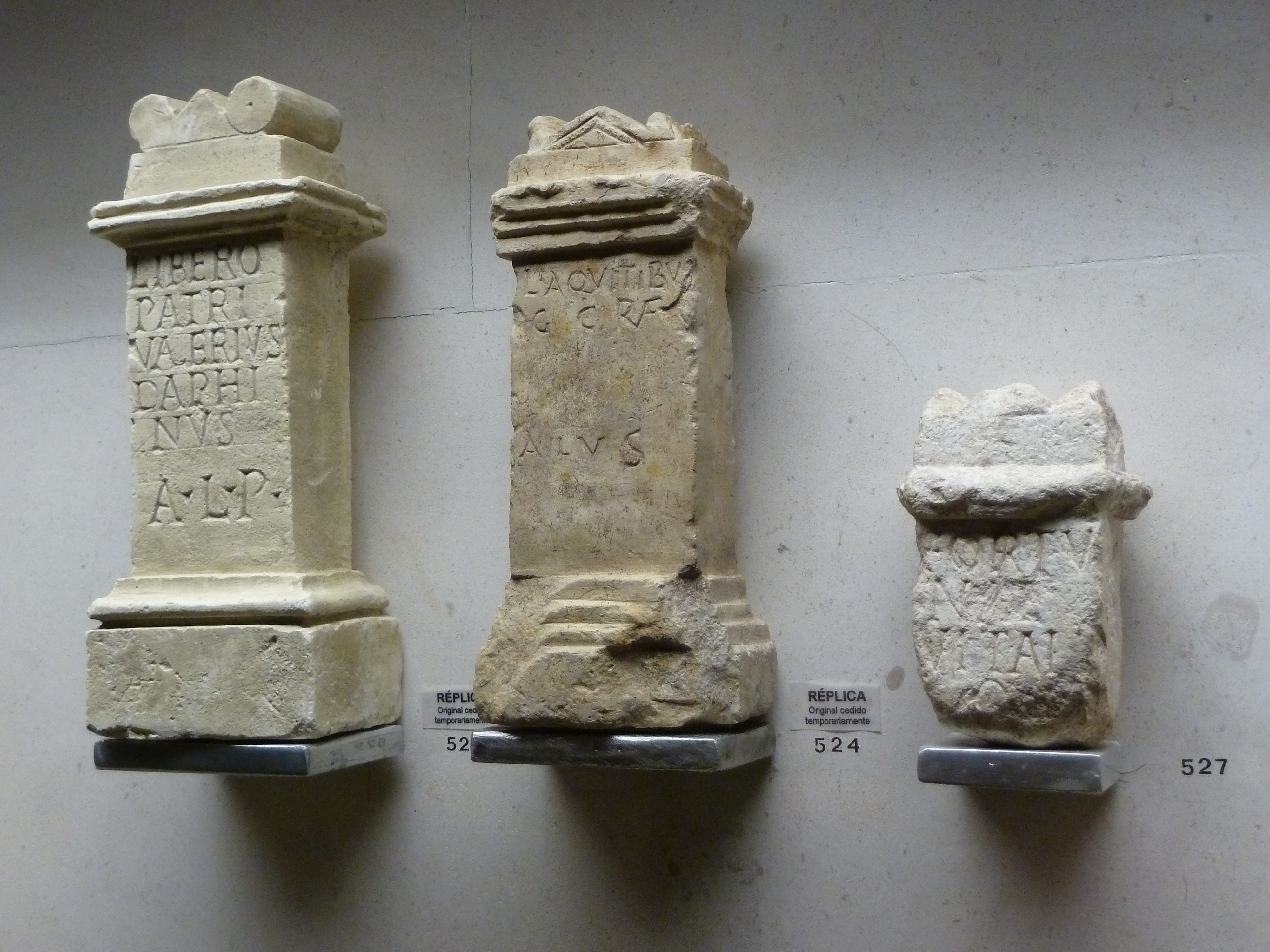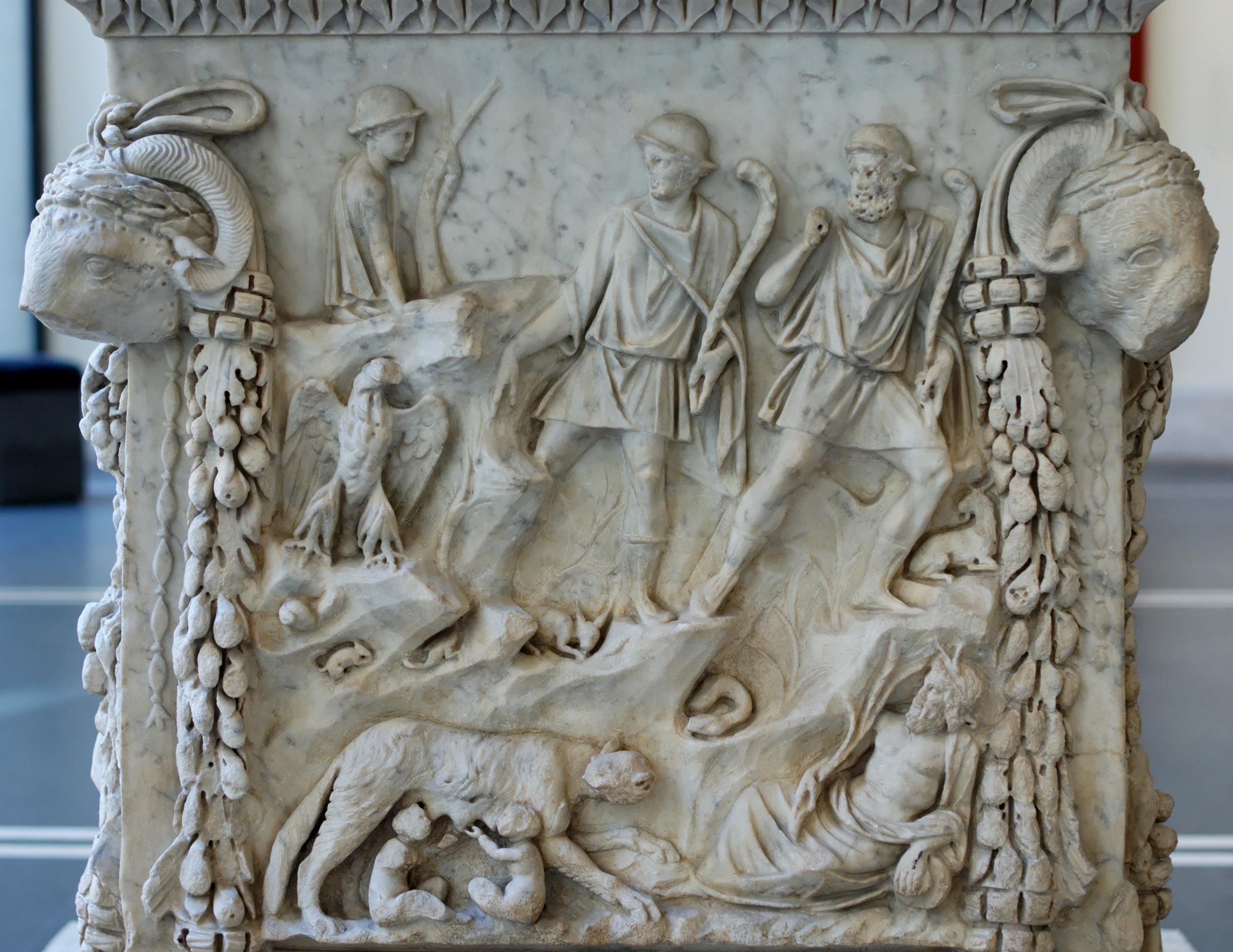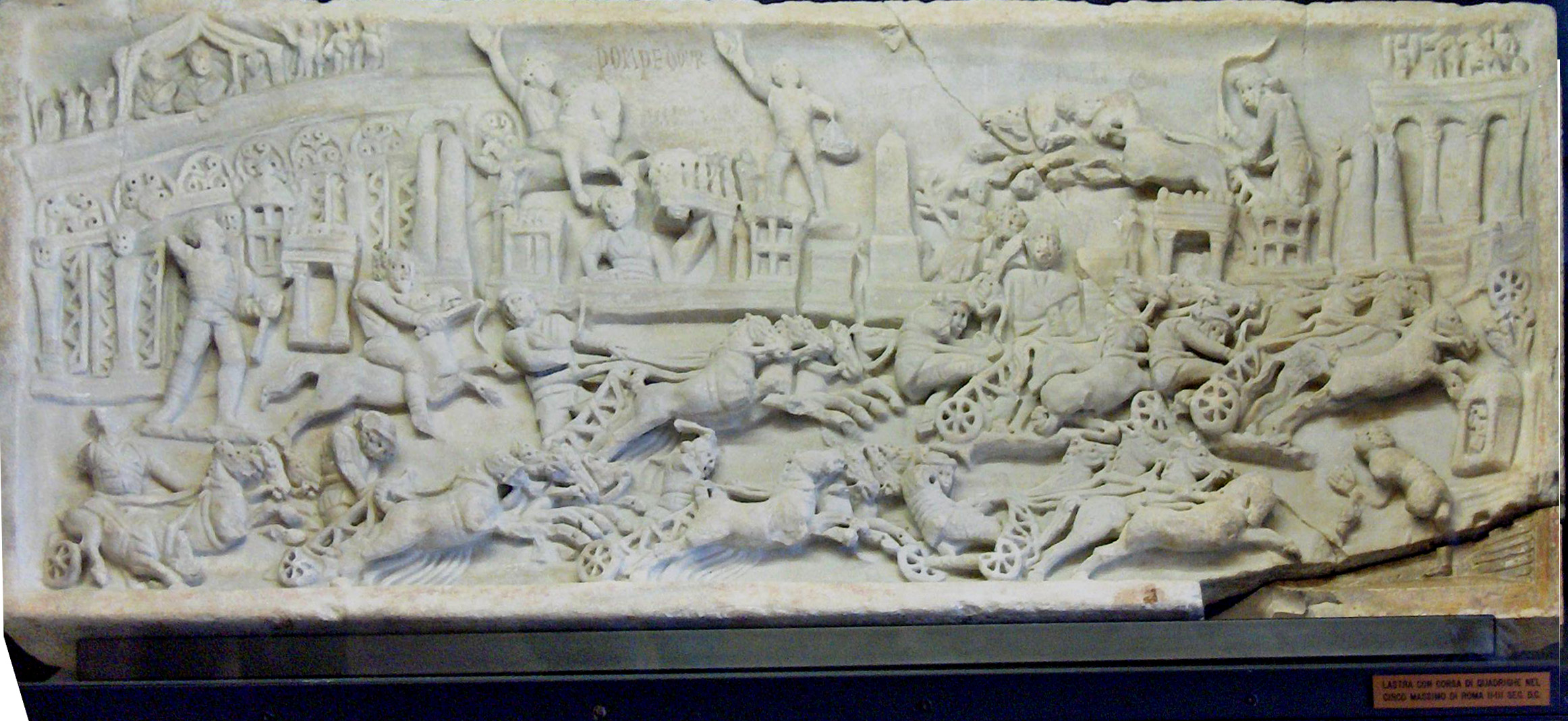|
Liber
In Religion in ancient Rome, ancient Roman religion and Roman mythology, mythology, Liber ( , ; "the free one"), also known as Liber Pater ("the free Father"), was a god of viticulture and wine, male fertility and freedom. He was a patron deity of Rome's plebeians and was part of their Aventine Triad. His festival of Liberalia (March 17) became associated with free speech and the rights attached to coming of age. His cult and functions were increasingly associated with Romanised forms of the Greek Dionysus/Bacchus, whose mythology he came to share. Etymology The name ''Līber'' ('free') stems from Proto-Italic language, Proto-Italic ''*leuþero'', and ultimately from Proto-Indo-European language, Proto-Indo-European ''*h₁leudʰero'' ('belonging to the people', hence 'free'). Origins and establishment Before his official adoption as a Roman deity, Liber was companion to two different goddesses in two separate, archaic Italian fertility cults; Ceres (Roman mythology), Cere ... [...More Info...] [...Related Items...] OR: [Wikipedia] [Google] [Baidu] |
Dionysus
In ancient Greek religion and Greek mythology, myth, Dionysus (; ) is the god of wine-making, orchards and fruit, vegetation, fertility, festivity, insanity, ritual madness, religious ecstasy, and theatre. He was also known as Bacchus ( or ; ) by the Greeks (a name later adopted by the Ancient Rome, Romans) for a frenzy he is said to induce called ''baccheia''. His wine, music, and ecstatic dance were considered to free his followers from self-conscious fear and care, and subvert the oppressive restraints of the powerful. His ''thyrsus'', a fennel-stem sceptre, sometimes wound with ivy and dripping with honey, is both a beneficent wand and a weapon used to destroy those who oppose his Cult of Dionysus, cult and the freedoms he represents. Those who partake of his mysteries are believed to become possessed and empowered by the god himself. His origins are uncertain, and his cults took many forms; some are described by ancient sources as Thrace, Thracian, others as Greek. In O ... [...More Info...] [...Related Items...] OR: [Wikipedia] [Google] [Baidu] |
Aventine Triad
The Aventine Triad (also referred to as the plebeian Triad or the agricultural Triad) is a modern term for the joint cult of the Roman deities Ceres, Liber and Libera. The cult was established within a sacred district ''(templum)'' on or near the Aventine Hill, traditionally associated with the Roman ''plebs''. Later accounts describe the temple building and rites as "Greek" in style. Some modern historians describe the Aventine Triad as a plebeian parallel and self-conscious antithesis to the Archaic Triad of Jupiter, Mars and Quirinus and the later Capitoline Triad of Jupiter, Minerva and Juno. The Aventine Triad, temple and associated ''ludi'' (games and theatrical performances) served as a focus of plebeian identity, sometimes in opposition to Rome's original ruling elite, the patricians. Origins The Aventine relationship between Ceres, Liber and Libera was probably based first on their functions as agricultural and fertility deities of the ''plebs'' as a distinct socia ... [...More Info...] [...Related Items...] OR: [Wikipedia] [Google] [Baidu] |
Libera (mythology)
Proserpina ( ; ) or Proserpine ( ) is an ancient Roman goddess whose iconography, functions and myths are virtually identical to those of Greek Persephone. Proserpina replaced or was combined with the ancient Roman fertility goddess Libera, whose principal cult was housed in the Aventine temple of the grain-goddess Ceres, along with the wine god Liber. Each of these three deities occupied their own '' cella'' at the temple. Their cults were served or supervised by a male public priesthood. Ceres was by far the senior of the three, one of the ''Dii Consentes'', Rome's approximate equivalent to the Greek Twelve Olympians. She was identified with Greek Demeter and Liber was identified with Bacchus and Dionysus. Libera is sometimes described as a female version of Liber Pater, concerned with female fertility. Otherwise she is given no clear identity or mythology by Roman sources, and no Greek equivalent. Nothing is known of her native iconography: her name translates as a feminine ... [...More Info...] [...Related Items...] OR: [Wikipedia] [Google] [Baidu] |
Liberalia
In ancient Roman religion Religion in ancient Rome consisted of varying imperial and provincial religious practices, which were followed both by the Roman people, people of Rome as well as those who were brought under its rule. The Romans thought of themselves as high ..., the Liberalia (March 17) was the festival of Liber Pater and his consort Libera. T.P. Wiseman, ''Remus: a Roman Myth'', Cambridge University Press, 1995, p. 133. The Romans celebrated Liberalia with sacrifices, processions, ribald and gauche songs, and masks which were hung on trees. The feast celebrated the maturation of young boys to manhood. Roman boys, usually at age 15 or 16, would remove the '' bulla praetexta'', a hollow charm of gold or leather, which parents placed about the necks of children to ward off evil spirits. At the Liberalia ceremony the young men might place the bulla on an altar (with a lock of hair or the stubble of a first shave placed inside) and dedicate it to the Lares, the ... [...More Info...] [...Related Items...] OR: [Wikipedia] [Google] [Baidu] |
Ceres (Roman Mythology)
In ancient Roman religion, Ceres ( , ) was a goddess of agriculture, grain crops, fertility and motherly relationships.Room, Adrian, ''Who's Who in Classical Mythology'', p. 89-90. NTC Publishing 1990. . She was originally the central deity in Rome's so-called plebeian or Aventine Triad, then was paired with her daughter Proserpina in what Romans described as "the Greek rites of Ceres". Her seven-day April festival of Cerealia included the popular ''Ludi Ceriales'' (Ceres' games). She was also honoured in the May lustration (''lustratio'') of the fields at the Ambarvalia festival: at harvesttime: and during Roman marriages and funeral rites. She is usually depicted as a mature woman. Ceres is the only one of Rome's many agricultural deities to be listed among the Dii Consentes, Rome's equivalent to the Twelve Olympians of Greek mythology. The Romans saw her as the counterpart of the Greek goddess Demeter,''Larousse Desk Reference Encyclopedia'', The Book People, Haydock, 19 ... [...More Info...] [...Related Items...] OR: [Wikipedia] [Google] [Baidu] |
Di Selecti
The Roman deities most widely known today are those the Romans identified with Interpretatio graeca, Greek counterparts, integrating Greek mythology, Greek myths, ancient Greek art, iconography, and sometimes Religion in ancient Greece, religious practices into ancient Roman culture, Roman culture, including Latin literature, ancient Roman art, Roman art, and Religion in ancient Rome, religious life as it was experienced throughout the Roman Empire. Many of the Romans' own gods remain obscure, known only by name and sometimes function, through inscriptions and texts that are often fragmentary. This is particularly true of those gods belonging to the archaic religion of the Romans dating back to the Roman Kingdom, era of kings, the so-called "religion of Numa Pompilius, Numa", which was perpetuated or revived over the centuries. Some archaic deities have Italic peoples, Italic or Etruscan religion, Etruscan counterparts, as identified both by ancient sources and by modern scholars ... [...More Info...] [...Related Items...] OR: [Wikipedia] [Google] [Baidu] |
Persephone
In ancient Greek mythology and Ancient Greek religion, religion, Persephone ( ; , classical pronunciation: ), also called Kore ( ; ) or Cora, is the daughter of Zeus and Demeter. She became the queen of the Greek underworld, underworld after her abduction by her uncle Hades, the king of the underworld, who would later take her into marriage. The myth of her abduction, her sojourn in the underworld, and her cyclical return to the surface represents her functions as the embodiment of spring and the personification of vegetation, especially grain crops, which disappear into the earth when sown, sprout from the earth in spring, and are harvested when fully grown. In Art in ancient Greece, Classical Greek art, Persephone is invariably portrayed robed, often carrying a wikt:sheaf, sheaf of grain. She may appear as a mystical divinity with a sceptre and a little box, but she was mostly represented in the process of being carried off by Hades. Persephone, as a vegetation deity, veg ... [...More Info...] [...Related Items...] OR: [Wikipedia] [Google] [Baidu] |
Religion In Ancient Rome
Religion in ancient Rome consisted of varying imperial and provincial religious practices, which were followed both by the Roman people, people of Rome as well as those who were brought under its rule. The Romans thought of themselves as highly religious, and attributed their success as a world power to their collective piety () in maintaining Pax deorum, good relations with the gods. Their Polytheism, polytheistic religion is known for having honoured List of Roman deities, many deities. The presence of Magna Graecia, Greeks on the Italian peninsula from the beginning of the historical period influenced Culture of ancient Rome, Roman culture, introducing some religious practices that became fundamental, such as the of Apollo. The Romans looked for common ground between their major gods and those of the Greeks (), adapting Greek mythology, Greek myths and iconography for Latin literature and Roman art, as the Etruscans had. Etruscan religion was also a major influence, partic ... [...More Info...] [...Related Items...] OR: [Wikipedia] [Google] [Baidu] |
Demeter
In ancient Greek religion and Greek mythology, mythology, Demeter (; Attic Greek, Attic: ''Dēmḗtēr'' ; Doric Greek, Doric: ''Dāmā́tēr'') is the Twelve Olympians, Olympian goddess of the harvest and agriculture, presiding over crops, grains, food, and the fertility (soil), fertility of the earth. Although Demeter is mostly known as a grain goddess, she also appeared as a goddess of health, birth, and marriage, and had connections to the Greek underworld, Underworld. She is also called Deo ( ''Dēṓ''). In Greek tradition, Demeter is the second child of the Titans Rhea (mythology), Rhea and Cronus, and sister to Hestia, Hera, Hades, Poseidon, and Zeus. Like her other siblings except Zeus, she was swallowed by her father as an infant and rescued by Zeus. Through Zeus, she became the mother of Persephone, a fertility goddess and Dying-and-rising deity, resurrection deity. One of the most notable ''Homeric Hymns'', the ''Homeric Hymn to Demeter'', tells the story of ... [...More Info...] [...Related Items...] OR: [Wikipedia] [Google] [Baidu] |
Aventine Hill
The Aventine Hill (; ; ) is one of the Seven Hills on which ancient Rome was built. It belongs to Ripa, the modern twelfth ''rione'', or ward, of Rome. Location and boundaries The Aventine Hill is the southernmost of Rome's seven hills. It has two distinct heights, one greater to the northwest (''Aventinus Major'') and one lesser to the southeast (''Aventinus Minor''), divided by a steep cleft that provides the base for an ancient roadway between the heights. During the Republican era, the two hills may have been recognized as a single entity. The Augustan reforms of Rome's urban neighbourhoods ('' vici'') recognised the ancient road between the two heights (the modern Viale Aventino) as a common boundary between the new Regio XIII, which absorbed Aventinus Maior, and the part of Regio XII known as Aventinus Minor. Etymology and mythology Most Roman sources trace the name of the hill to a legendary king Aventinus. Servius identifies two kings of that name, one ancient ... [...More Info...] [...Related Items...] OR: [Wikipedia] [Google] [Baidu] |
Roman Mythology
Roman mythology is the body of myths of ancient Rome as represented in the literature and visual arts of the Romans, and is a form of Roman folklore. "Roman mythology" may also refer to the modern study of these representations, and to the subject matter as represented in the literature and art of other cultures in any period. Roman mythology draws from the mythology of the Italic peoples and shares mythemes with Proto-Indo-European mythology. The Romans usually treated their traditional narratives as historical, even when these have miraculous or supernatural elements. The stories are often concerned with politics and morality, and how an individual's personal integrity relates to his or her responsibility to the community or Roman state. Heroism is an important theme. When the stories illuminate Roman religious practices, they are more concerned with ritual, augury, and institutions than with theology or cosmogony. Roman mythology also draws on Greek mythology, pri ... [...More Info...] [...Related Items...] OR: [Wikipedia] [Google] [Baidu] |
Ludi
''Ludi'' (Latin:games; plural of "ludus") were public games held for the benefit and entertainment of the Roman people (''populus Romanus''). ''Ludi'' were held in conjunction with, or sometimes as the major feature of, Roman religious festivals, and were also presented as part of the cult of state. The earliest ''ludi'' were horse races in the circus (''ludi circenses''). Animal exhibitions with mock hunts ('' venationes'') and theatrical performances (''ludi scaenici'') also became part of the festivals. Because some of these entertainments are not competitive "games", ''ludi'' may also be translated more generally as "shows". Days on which ''ludi'' were held were public holidays, and no business could be conducted—"remarkably," it has been noted, "considering that in the Imperial era more than 135 days might be spent at these entertainments" during the year. Although their entertainment value may have overshadowed religious sentiment at any given moment, even in lat ... [...More Info...] [...Related Items...] OR: [Wikipedia] [Google] [Baidu] |









